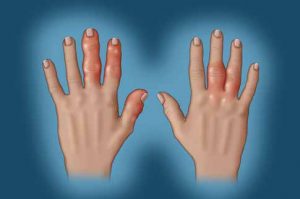 MADRID—In recent years, the features that make psoriatic arthritis (PsA) distinct from rheumatoid arthritis (RA) have gained increasing attention and allowed for a better understanding of the disease. Recently, a review article in RMD Open described how PsA includes asymmetric joint involvement, may involve the axial spine and may be seronegative for rheumatoid factor (RF) and cyclic citrullinated peptide (CCP). All of these features are not as common in RA. Moreover, differences in the pathogenesis of PsA and RA explain why the specificity and efficacy of certain therapies vary between the two diseases.1
MADRID—In recent years, the features that make psoriatic arthritis (PsA) distinct from rheumatoid arthritis (RA) have gained increasing attention and allowed for a better understanding of the disease. Recently, a review article in RMD Open described how PsA includes asymmetric joint involvement, may involve the axial spine and may be seronegative for rheumatoid factor (RF) and cyclic citrullinated peptide (CCP). All of these features are not as common in RA. Moreover, differences in the pathogenesis of PsA and RA explain why the specificity and efficacy of certain therapies vary between the two diseases.1
Although understanding the differences between PsA and other forms of inflammatory arthritis is important, so too is recognizing the variations in PsA phenotypes in patients, as well as how these individual subpopulations should be treated.
At the 2019 European Congress of Rheumatology (EULAR), June 12–15, during a session titled, The Multiple Rheumatological Faces of Psoriatic Arthritis, Laura Coates, MBChB, MRCP, PhD, a clinician scientist and senior clinical research fellow at the National Institute for Health Research at the University of Oxford, England, described the five classic subtypes of patients with PsA. As noted in prior research from 1973, these patient subtypes are:
- Patients with classic PsA, with distal interphalangeal joint involvement;
- Patients with arthritis mutilans;
- Seronegative patients with symmetric patterns of joint involvement similar to RA;
- Patients with predominant axial spine involvement; and
- Patients with single or few finger or toe joints involved, typically with scattered distal interphalangeal joint, proximal interphalangeal joint and metatarsophalangeal joint involvement.2
It’s this last group that includes patients with monoarthritis or oligoarthritis, a cohort traditionally regarded as distinct from patients with polyarthritis (i.e., individuals with five or more joints involved by PsA). Dr. Coates noted that even the simple step of classifying patients is not always straightforward. A study evaluated 500 patients with oligoarticular PsA with a 28-joint count and then re-evaluated them with a 68-tender and 66-swollen joint count. The 28-joint count missed 21% of patients with tender joints and 27% of patients with swollen joints. This study implies that a full 66/68 joint count is important for assessing disease activity in PsA patients and properly classifying patients as oligoarticular or polyarticular.3
In comparing monoarticular/oligoarticular and polyarticular PsA patients, Dr. Coates pointed to work from the U.K. This research showed that although the groups differed by age, sex, disability score and symmetry, no differences existed between them in terms of seropositivity for RF and CCP, enthesitis, or spinal pain and stiffness. And aside from entheseal changes, syndesmophytes and osteolysis, typical radiological features of PsA could not be used to distinguish between the groups.4



